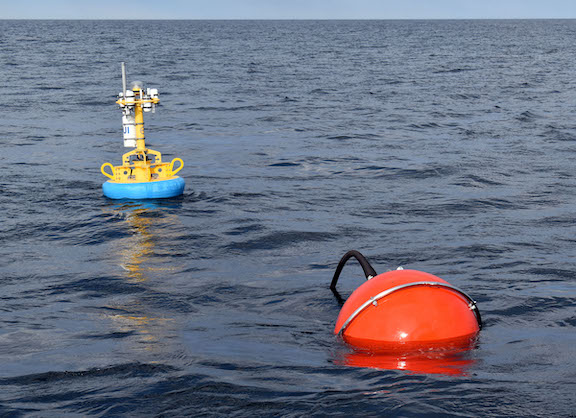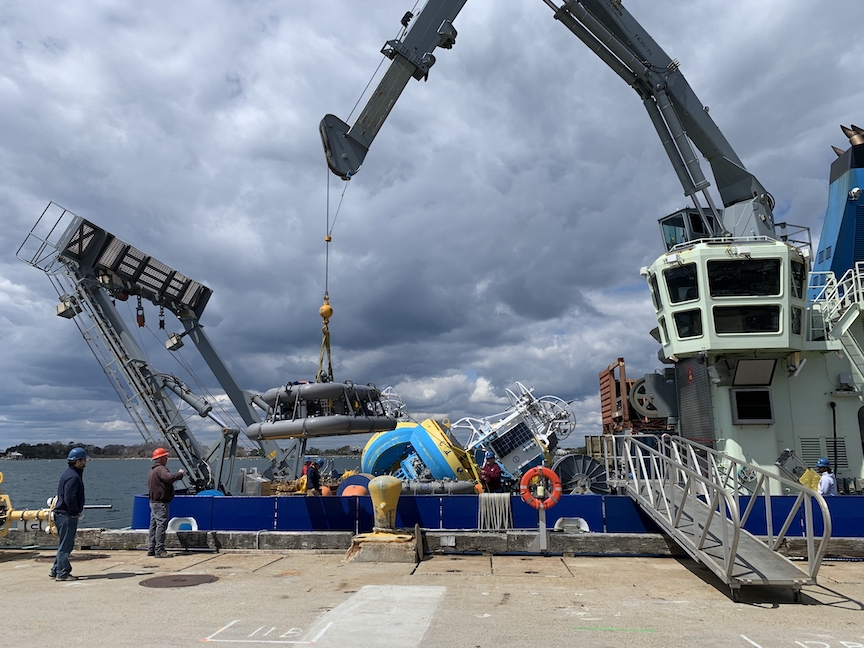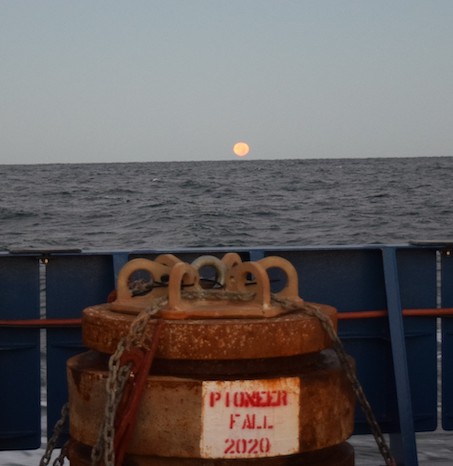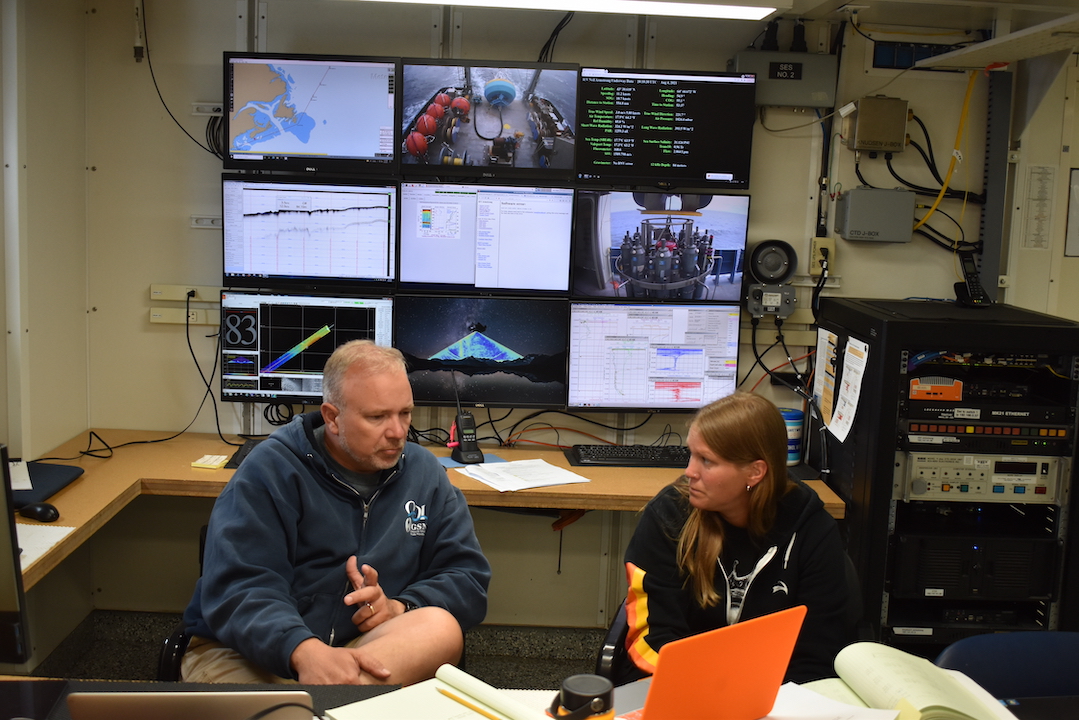Recovery of Pioneer Array in November
On November 9, 2022, a team of 18 scientists and engineers will leave the dock at Woods Hole, MA aboard the R/V Neil Armstrong on an historic expedition. It will be the nineteenth, and last, expedition to the Coastal Pioneer Array on the New England Shelf (NES). This is because the team will be recovering, but not redeploying the NES Pioneer array as in prior years. Designed to be relocatable, the array will be moved to a new location in theSouthern Mid-Atlantic Bight in early 2024. The ocean observing data collected since 2016 at the NES site, about 75 nautical miles south of Martha’s Vineyard, has provided valuable insights into changing ocean conditions at the Atlantic continental shelf and upper slope. The New England Shelf Pioneer data will remain available to the community for continued analysis.
“The Coastal Pioneer Array has been a true workhorse, providing valuable, consistent data from this important intersection in the ocean, where ocean currents meet in weather-like “fronts,” and where heat, salt, nutrients, and other properties are exchanged between the coast and the deep ocean “said Chief Scientist John Lund, who has been on 18 of Pioneer’s 19 expeditions.
“The impacts of the Coastal Pioneer Array have been many,” added Al Plueddemann, Principal Investigator of OOI Coastal and Global Scale Nodes. “To my knowledge, OOI Pioneer is the first sustained, interdisciplinary shelfbreak observatory. Pioneer data have allowed researchers to identify new shelf-slope dynamics and exchange mechanisms and have given us a first glimpse of what appears to be a changing coastal regime. It is very gratifying to see these outcomes, and to recognize the promise of continued findings using the data for years to come.”

The Pioneer 19 expedition will be conducted in two legs. The Armstrong will leave port with a nearly empty back deck to allow for carrying back the various parts of the array. During the expedition, three coastal surface moorings, five coastal profiler moorings four coastal gliders, and two global test gliders will be recovered. Additionally, Autonomous Underwater Vehicle (AUV) operations will be conducted in the vicinity of the moored array, as well as CTD (conductivity, temperature, and depth) casts and water sampling at the mooring, AUV, and glider recovery sites. To take full advantage of the time at sea, comparisons of ship and buoy meteorological measurements at the surface mooring sites will be made.
To carry on the collaborative nature of the Pioneer expeditions, during leg 1, the Pioneer Team will be joined by a marine mammal observer from the National Oceanic and Atmospheric Administration and a graduate student from Woods Hole Oceanographic Institution who will be measuring frontal systems, using the shipboard acoustic doppler current profiler and thermosalinograph. Leg 1 will also include a special deployment of a mini-boat surface drifter for an Educational Passages program. This mini-boat was built by students at Waterford School in Connecticut will coincide with the deployment of a similar boat built by students in Ireland.
Leg 2 will include investigators from the New England Shelf Long Term Ecological Research (NES-LTER) Program, who will be conducting underway sampling, and CTD and zooplankton net casts at LTER sites.
An intern from the Marine Advanced Technology Education (MATE) Center will be onboard during both legs.
“While we are all a bit nostalgic about this being the last journey to the Pioneer Array in this location, we are excited about the new science questions that will be answered by the array in its new location.” said Chief Scientist Lund. “We are proud to have been part of collecting nearly a decade’s worth of measurements, which are being used to better understand coastal processes in general with an emphasis on this important New England ocean region.”



